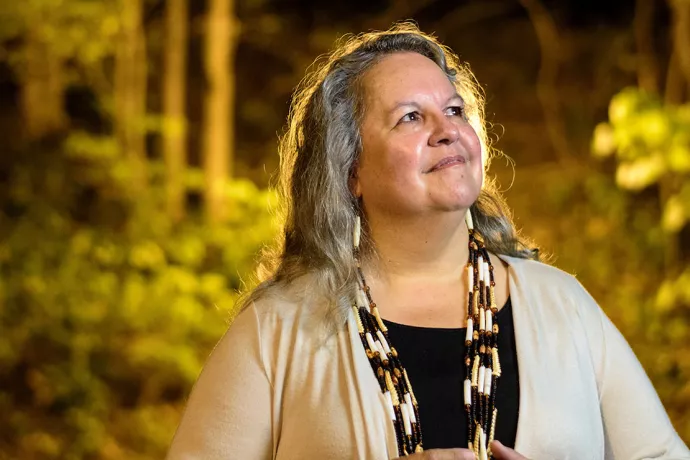
Drawing on Indigenous wisdom to become ecological citizens: 2021 Snider Lecture
By now, most of us understand that living out of balance with the natural world can have grave ecological consequences. It’s the reason why the United Nations issued a code red for humanity last month due to worsening global warming, and why climate change was an especially prominent issue in last week’s federal election.
To restore an honourable relationship with the earth, we must complement Western scientific knowledge with traditional Indigenous wisdom in order to live harmoniously with animals and plants, says scientist, author and Citizen Potawatomi Nation member Robin Wall Kimmerer.
That’s the message of Kimmerer’s substantive and well-received 2013 non-fiction book, Braiding Sweetgrass: Indigenous Wisdom, Scientific Knowledge, and the Teachings of Plants. On Monday, Oct. 4, she will share her insights on ecological restoration at UTM’s annual Snider Lecture.
Taking place live on YouTube at 7 p.m., the free one-hour event will feature Kimmerer explaining how ancient Indigenous knowledge, which has historically been marginalized by or absent from Western scientific inquiry, can help us heal the wounds we have inflicted on the natural world, and re-establish a reciprocal relationship with the land.
“I think of indigenous knowledge and Western science both as powerful intellectual traditions, which grow from different worldviews, but can both illuminate the nature of the living world and how we might better care for it,” says Kimmerer, a distinguished teaching professor of environmental biology and founder and director of the Center for Native Peoples and the Environment at the State University of New York. “They are distinctive, sovereign systems of knowledge which can complement one another. Our capacity to achieve sustainability and a more positive relations with the natural world is strengthened when we use both.”
In Braiding Sweetgrass, Kimmerer draws on training as a botanist and her Indigenous heritage to reveal across 408 pages how living beings of all types—goldenrod flowers, strawberries, salamanders, algae—offer us important lessons about the interconnectedness of life. A talented storyteller, Kimmerer writes with deep compassion and graceful prose to spark in readers an emotional connection to our natural world that she hopes will help inspire a greater sense of stewardship for the planet. The New York Times bestseller struck a chord, becoming the focus of book clubs, classroom lessons and library discussions worldwide.
“I’ve come to understand my writing as an act of reciprocity with the plants and land, a way of returning a gift in return for all they have given me,” says Kimmerer, who is also the author of the 2003 book Gathering Moss: A Natural and Cultural History of Mosses. “I realized that writing strictly for a scientific audience in peer-reviewed journals was not serving the good of the land, for that I needed to touch hearts as well as minds.”
Through her work as an author, Kimmerer has discovered a growing hunger among more people to better understand the natural world, and feel a part of the ecological community that has been so damaged by our extractive industries. At the UTM talk, she will share her insights on how humans might once again develop an honourable relationship with the land.
“I hope participants take away a renewed sense of the ways that humans can be medicine for the earth, living as if we were ecological citizens, who return the gifts of the earth,” she says.
